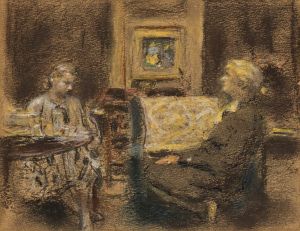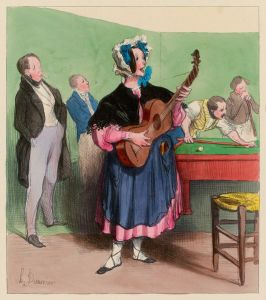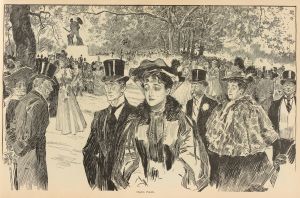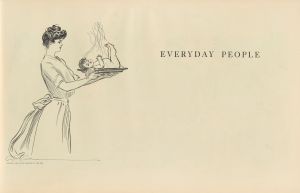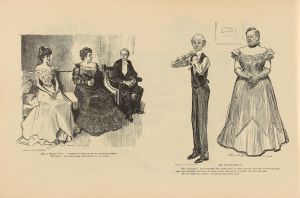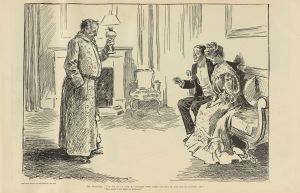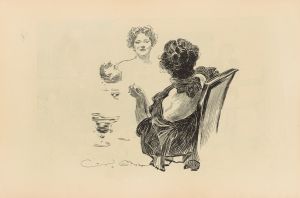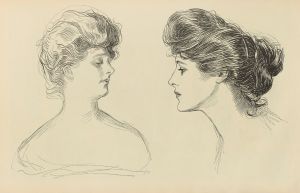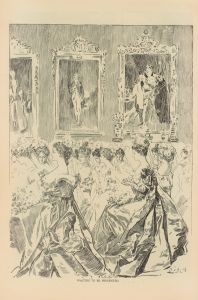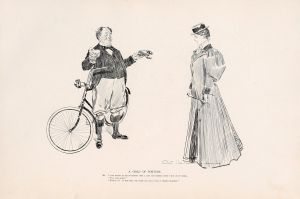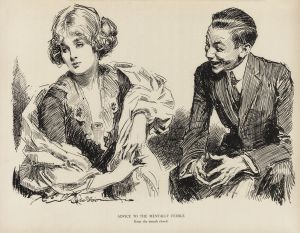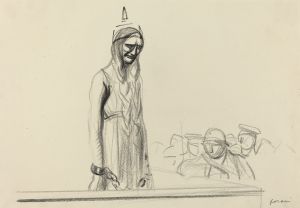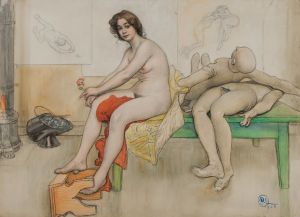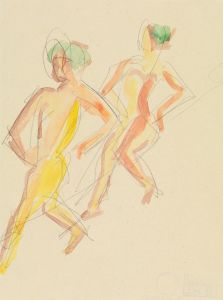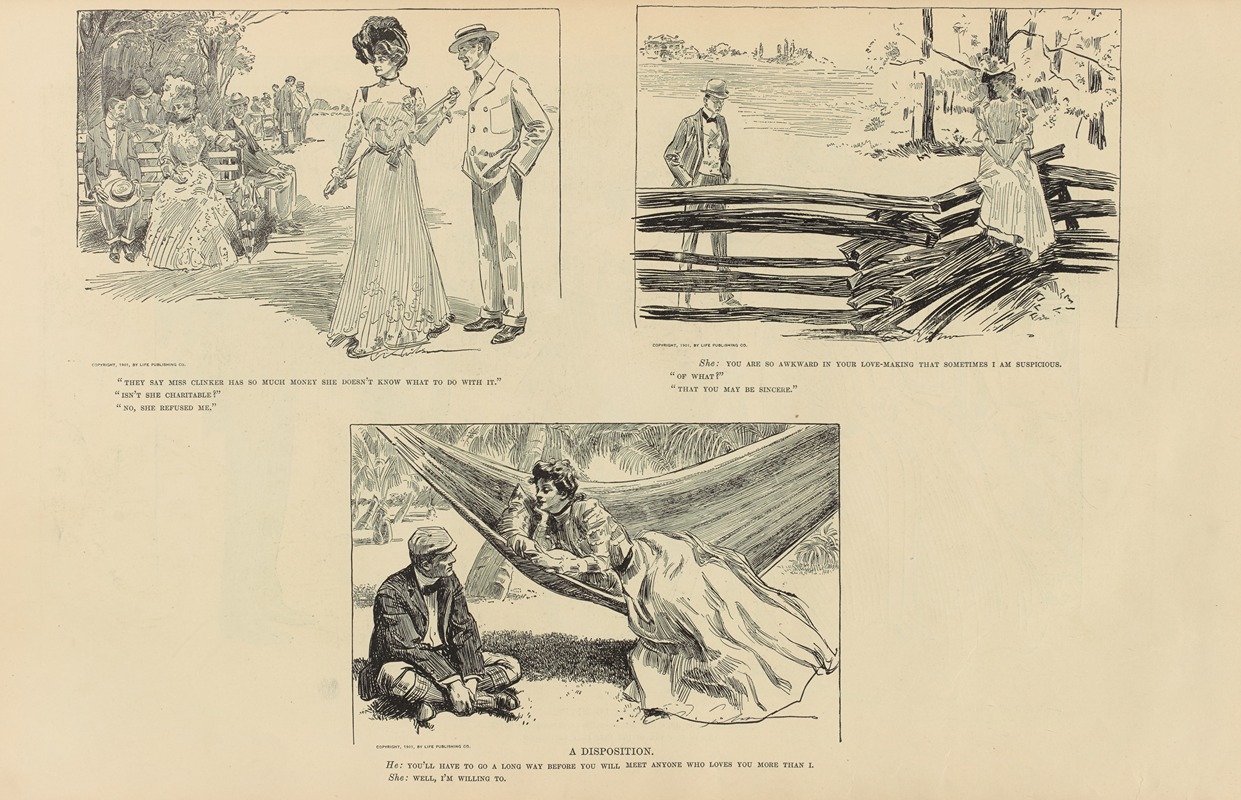
A disposition
A hand-painted replica of Charles Dana Gibson’s masterpiece A disposition, meticulously crafted by professional artists to capture the true essence of the original. Each piece is created with museum-quality canvas and rare mineral pigments, carefully painted by experienced artists with delicate brushstrokes and rich, layered colors to perfectly recreate the texture of the original artwork. Unlike machine-printed reproductions, this hand-painted version brings the painting to life, infused with the artist’s emotions and skill in every stroke. Whether for personal collection or home decoration, it instantly elevates the artistic atmosphere of any space.
Charles Dana Gibson was an influential American illustrator, best known for creating the iconic "Gibson Girl," a representation of the idealized American woman at the turn of the 20th century. His work captured the spirit of the era and influenced fashion and culture. One of his notable works is "A Disposition," which exemplifies his style and thematic focus.
"A Disposition" is a pen-and-ink illustration that showcases Gibson's mastery of line work and his ability to convey complex social narratives through simple yet expressive drawings. The artwork typically features a scene that reflects the social dynamics and gender roles of the time. Gibson's illustrations often depicted the interactions between men and women, highlighting the evolving roles and expectations of women in society.
The "Gibson Girl" was characterized by her poise, beauty, and independence, and she often appeared in Gibson's works, including "A Disposition." This character became a cultural icon, representing the modern woman who was both fashionable and self-assured. The Gibson Girl was often depicted in various social settings, engaging with male counterparts, and navigating the complexities of relationships and societal expectations.
Gibson's work, including "A Disposition," was published in popular magazines of the time, such as Life, Harper's Weekly, and Scribner's, reaching a wide audience and cementing his influence on American culture. His illustrations were not only artistic expressions but also commentaries on the social issues of the day, such as the changing roles of women, courtship, and the balance of power between genders.
The style of "A Disposition" is characterized by its clean lines and detailed rendering, typical of Gibson's technique. He had a keen eye for fashion and detail, which is evident in the clothing and hairstyles of his characters. The composition of his illustrations often included a central female figure, surrounded by admirers or engaged in a social activity, capturing the viewer's attention and conveying a narrative through visual means.
Gibson's influence extended beyond illustration; he played a significant role in shaping the visual culture of his time. The Gibson Girl became a symbol of the Progressive Era, embodying the aspirations and challenges faced by women as they sought greater autonomy and recognition in society. His work resonated with audiences and inspired future generations of artists and illustrators.
In summary, "A Disposition" by Charles Dana Gibson is a testament to the artist's skill in capturing the essence of early 20th-century American society. Through his depiction of the Gibson Girl and the social interactions of the time, Gibson provided a window into the cultural shifts and gender dynamics that defined the era. His legacy continues to be celebrated for its artistic merit and its impact on the portrayal of women in art and popular culture.





